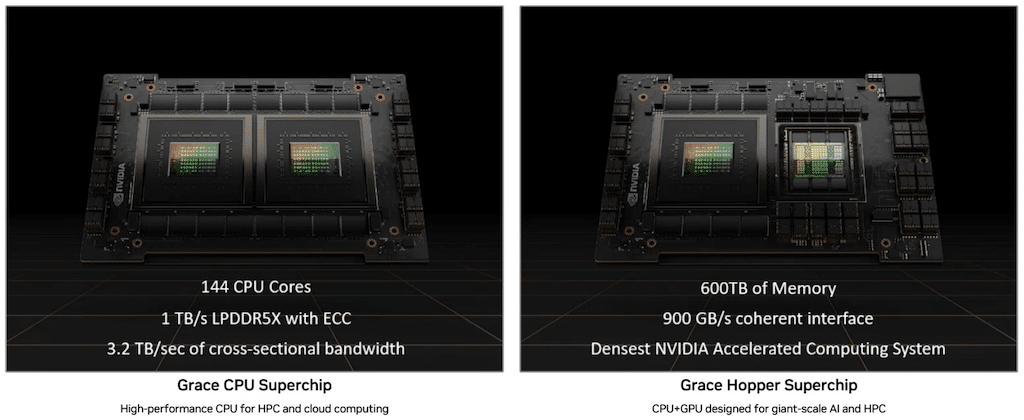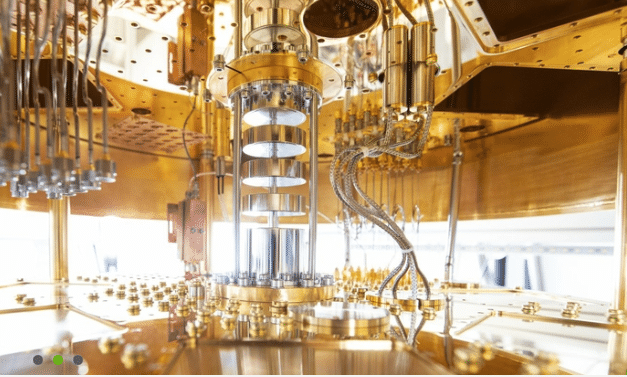NVIDIA made several news announcements at the start of ISC 23 in Hamburg, Germany, including a supercomputer built on the NVIDIA Grace CPU Superchip, a Quantum Computing Breakthrough for Computational Fluid Dynamics in Jet Engines, and the NVIDIA-Jülich Supercomputing Centre.
NVIDIA made several news announcements at the start of ISC 23 in Hamburg, Germany, including a supercomputer built on the NVIDIA Grace CPU Superchip, a Quantum Computing Breakthrough for Computational Fluid Dynamics in Jet Engines, and the NVIDIA-Jülich Supercomputing Centre.

The Isambard 3 supercomputer is built on the NVIDIA Grace CPU Superchip, joining a list of energy-efficient supercomputers based on the Arm Neoverse platform. The supercomputer will be located at the Bristol and Bath Science Park in the U.K. and features 384 Arm-based NVIDIA Grace CPU Superchips to power medical and scientific research. The Isambard 3 is expected to deliver 6x the performance and energy efficiency of the Isambard 2, placing it among Europe’s most energy-efficient systems.
The new supercomputer can achieve 2.7 petaflops of FP64 performance while consuming less than 270 kilowatts of power. The project is led by the University of Bristol, as part of the GW4 Alliance research consortium, along with the universities of Bath, Cardiff, and Exeter. NVIDIA’s Arm-based supercomputers continue to gain traction with other systems that include GPUs built at the Swiss National Supercomputing Centre and the Los Alamos National Laboratory.
Built By HPE
HPE will build Isambard 3 to enable Europe’s scientific research community to supercharge AI, life sciences, medical, astrophysics, and biotech breakthroughs. It will be able to create detailed models of very complex structures, such as wind farms and fusion reactors, to help unlock new advances in clean and green energy.
The system is expected to go into production in the spring of 2024, with the number of registered users to increase significantly beyond the current 800.
NVIDIA’s accelerated computing platform comprises NVIDIA H100 Tensor Core GPUs, NVIDIA Grace CPU Superchips, NVIDIA Grace Hopper™ Superchips, NVIDIA Quantum-2 InfiniBand networking, and a full suite of NVIDIA AI and HPC software.
World’s Largest Quantum Circuit For Industrial Simulation
NVIDIA, Rolls-Royce, and quantum software company Classiq, have designed and simulated the world’s largest quantum computing circuit for computational fluid dynamics (CFD), measuring ten million layers deep with 39 qubits. The computing breakthrough is aimed at delivering increasing efficiency to jet engines.

Close-up of Trent XWB engine in Test Bed prep in Derby, United Kingdom
Rolls-Royce intends to utilize the latest circuit technology to achieve quantum advantage in CFD. This will enable better modeling of jet engine designs in simulations that combine classical and quantum computing techniques. As a world leader in the aviation industry, Rolls-Royce views this breakthrough as essential in its work to build state-of-the-art jet engines that support energy transition with more sustainable aviation.
This project was a collaboration between Rolls-Royce and Classiq, and the simulation was powered by NVIDIA A100 Tensor Core GPUs. The speed and scale of the process were made possible by NVIDIA’s cuQuantum software development kit using optimized libraries and tools to speed quantum computing workflows.
NVIDIA Grace Hopper Accelerates Quantum Computing
The NVIDIA Grace Hopper Superchip, which combines the performance of NVIDIA Hopper GPUs with the NVIDIA Grace CPUs, is designed for giant-scale quantum simulation workloads. The high-speed, low-latency NVIDIA NVLink-C2C interconnect makes classical systems built with the superchip well suited to link to quantum processors, or QPUs. With a total 600GB of fast-accessible memory per node, Grace Hopper enables the quantum ecosystem to push these simulations to an even larger scale.
Collaboration to Build Quantum Computing Lab
Hybrid quantum-classical computing to a significant step forward as NVIDIA announced plans to build a new lab with the Jülich Supercomputing Centre (JSC) at Forschungszentrum Jülich (FZJ). The lab will feature a classical-quantum supercomputer in partnership with Parsec AG, Munich, based on the NVIDIA quantum computing platform.
FZJ is one of the largest interdisciplinary research centers in Europe and will host the lab as part of the Jülich UNified Infrastructure for Quantum Computing (JUNIQ) to run high-performance, low-latency quantum-classical computing workloads. JUNIQ is using the JUWELS booster system with 3,744 NVIDIA A100 Tensor Core GPUs for quantum computing simulations.
NVIDIA’s quantum computing platform enables tight integration of quantum and classical computing through the open-source CUDA Quantum programming model and simulation through the NVIDIA cuQuantum software development kit.
JSC plans to use a phased approach to test the system and will use the NVIDIA CUDA Quantum programming model to program quantum processors and integrate them within the Jülich exascale modular supercomputing architecture.
Engage with StorageReview
Newsletter | YouTube | Podcast iTunes/Spotify | Instagram | Twitter | TikTok | RSS Feed

